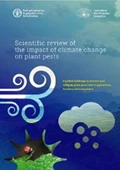
According to one of the world's leading coral scientists, the Great Barrier Reef is experiencing its sixth mass bleaching event, with official monitoring flights now taking place all along the Queensland coastline. The Great Barrier Reef Marine Park Authority (GBRMPA) has confirmed that monitoring flights are being conducted "along the length and breadth" of the world heritage reef's 2,300km.
However, the authority is not expected to provide a formal update on the conditions over the reef, or the preliminary findings from those flights, until Friday. The news comes less than a week before the start of a 10-day United Nations monitoring mission to the reef ahead of a crucial World Heritage Committee meeting in June.
Prof Terry Hughes of James Cook University, a leading expert on coral bleaching, said he had received a "flood of reports from the field" of bleached corals in the last two weeks. Rising ocean temperatures caused by human greenhouse gas emissions have resulted in five mass bleaching events along the reef in 1998, 2002, 2016, 2017, and 2020.
Hughes told the Guardian that he believes a sixth mass bleaching event is currently taking place, and that it will not be mild or local. Heat stress over the reef typically peaks in early to mid-March each year, but scientists became concerned as early as December after water temperatures reached record levels for that month.
"We all breathed a sigh of relief because corals that were pale in December regained their colour in January and February," Hughes said. However, there have been reports of moderate to severe bleaching all along the reef in the last three weeks.
According to Bureau of Meteorology observations, water temperatures are 1 to 2 degrees Celsius above average across large areas of the reef. According to a study led by Hughes, more than 98 percent of all individual reefs have bleached at least once.
Hughes has led aerial surveys across the length of the marine park to record the condition of corals from a low-flying aircraft during the last three mass bleaching events. Hughes stated that the task had now been delegated to the GBRMPA. He claimed that water temperatures and accumulated heat stress were insufficient to determine whether corals had bleached.
"We won't have a complete picture until the flights are completed," he explained. "We need to see those bleaching maps before we can say how this compares to the other five bleaching events." For weeks, the GBRMPA has been compiling bleaching data from flights, in-water surveillance, and reports. A week ago, the authority reported "low to moderate bleaching" in many areas.
The authority said in a statement on Thursday that it was "conducting aerial surveys along the length and breadth of the reef, to get a clearer picture of any bleaching in the Marine Park this summer." Every Friday, the status of the reef's health is updated." Flights started last weekend.
According to the Australian Institute of Marine Science, the recovery in coral cover over the reef since the last bleaching event in 2020 has been driven by fast-growing acropora corals, which are also bleaching-prone.
Hughes stated that the northern parts of the reef were "halfway to recovery," but that a large number of "vulnerable corals" were now bleaching. Corals can recover from mild bleaching, but if the heat stress is too great, the coral will die.
Although there is no formal definition of a mass bleaching event, Hughes stated that "most people would describe bleaching that includes severe levels of bleaching at a scale of hundreds of kilometres would qualify as a mass bleaching."
Last week, environmental groups said it was critical that a UN mission to the reef, which Australia has requested and will begin on Monday, be able to see bleaching. There has been no word from Unesco or the Australian government about where the mission will go or who it will meet.
The mission's report is due in early May, ahead of a scheduled world heritage committee meeting in June. Last year, UN science advisors advised the committee to list the reef as "in danger" due to the effects of bleaching and a lack of progress in reducing pollution levels.
The Australian government, however, successfully lobbied the 21-country committee to disregard the recommendation. During the meeting, Australia also joined countries in defying several UN recommendations concerning other sites around the world.
According to reports, Australia struck at least one quid pro quo – a deal with Spain to support a world heritage inscription for a site in Madrid, despite UN advisors' opposition, in exchange for Spain's support in preventing the reef from being listed as "in danger."
The Morrison government pledged an additional $1 billion for local reef conservation efforts over the next nine years last month. Many reef scientists, however, believe that unless greenhouse gas emissions are drastically reduced, efforts such as finding more heat-tolerant coral species, improving water quality, and removing coral-eating starfish will be overwhelmed by global warming.












